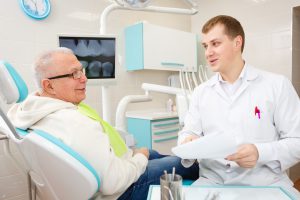
We as dental professionals have a significant role in combating the number one cause of death: cardiovascular disease. “High-risk periodontal pathogens contribute to the pathogenesis of atherosclerosis” is a powerful piece and I recommend you read it.
There is scientific evidence that [periodontal disease] PD caused by the high-risk pathogens can influence the pathogenesis triad in an adverse manner. With this appreciation, it is reasonable to state PD, due to high-risk pathogens, is a contributory cause of atherosclerosis. Distinguishing this type of PD as causal provides a significant opportunity to reduce arterial disease.
Bale BF, Doneen AL, Vigerust DJ. Postgrad Med J. 2016 Nov 29. [Epub ahead of print].
Let’s make sense out of this substantial excerpt by breaking down the mechanism by which specific perio pathogens cause atherosclerosis (ASVD).
The article states that the following perio pathogens are causal for ASVD by affecting the pathogenesis triad in a manner favoring the development of atherosclerosis:
- Aggregatibacter actinomycetemcomitans (A.a)
- Porphyromonas gingivalis (P.g.)
- Tannerella forsythia (T.f)
- Fusobacterium nucleatum (F.n.)
- Treponema denticola (T.d)
What is the pathogenesis triad? It is the criteria necessary to determine causality for ASVD. If a medical condition, or other agent, influences all of the following three elements, it can be concluded that it is a contributory cause of atherosclerosis:
1) 1st Requirement: Increased Serum Lipoprotein Concentration – Specifically, the bacteria P.g. and A.a. can increase the concentration of serum lipoprotein, which are particles that transport cholesterol and triglycerides in the bloodstream.
2) 2nd Requirement: Increased Endothelial Permeability – High-risk periodontal pathogens increase endothelial permeability via a number of different mechanisms, including breaking down endothelial cell to cell junctions, creating gaps in the arterial lining, among others. Damage to the endothelium, the one cell layer thick lining of arteries, provides a pathway for cholesterol, white blood cells, bacteria etc., to gain entry into the arterial wall. This ultimately leads to an atherosclerotic plaque.
3) 3rd Requirement: Lipoprotein Binding in the Intima – The perio pathogen P.g. can increase the binding of lipoproteins in the intima, the innermost layer of the artery wall.
Importantly the authors further stated; “From a clinical perspective there is a significant difference between being associated with versus being causal of a disease. Optimal management of an associated condition may not impact the end disease, whereas such management of a causal condition would have a favorable effect on the end disease.” Their conclusions included the following; “[PD due to high-risk microbes must be treated effectively to reduce the risk of ASVD].”
The primary take-away is the critical need to identify the bacteria by salivary testing, reduce the bacterial population, and then re-test. Your efforts are not in vain. Diminishing the likelihood of a cardiovascular event such as a heart attack or stroke from atherosclerosis is an enormous opportunity and now our responsibility.
For more information on how to become an OralDNA Provider – scan HERE: 
- The Insights Provided by Salivary Testing - December 27, 2019
- I Don’t Need That, We’re Already Getting Good Results - November 29, 2019
- What’s Your Excuse? - August 30, 2019
